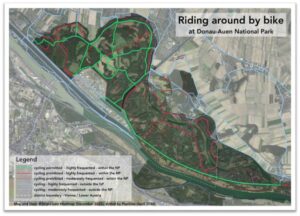Adapting to Increased Visitation: Practical Approaches to Visitor Management in Protected Areas
Four case studies highlighting successful approaches to visitor management in Protected Areas.
Adapting to Increased Visitation: Practical Approaches to Visitor Management in Protected Areas
The post-pandemic era has witnesses a remarkable surge in visitors to Protected Areas, creating both opportunities and challenges for park management. This article explores four case studies of visitor management approaches. Each case demonstrates successful practical strategies for balancing public access with environmental protection.

©Petra Niskanen
Case Study 1: Limits of acceptable changes (LAC) as a method for sustainable nature tourism in Sipoonkorpi National Park
Situated close to Finland’s capital city, Sipoonkorpi National Park has noticed a significant increase in nature based tourism since Covid-19. Though it is great for people to be out in nature, this increase of visitors has had negative social and ecological impacts such as visitor compaints and negative effects on wildlife. To manage this change, Sipoonkorpi National Park has implemented a new strategy that aims to dynamically track these negative impacts and to take necessary measures.
Full Case Study
©Strava.com Heatmap
Case Study 2: Detecting cycling activities with the use of Strava Heatmaps; Use of online available data in questions of visitor management
Lobau, a protected area of riparian forest along the Donnau in Vienna, is within a district that is expected to have a population increase of 50% in the next few years. This poses a threat to wildlife and recreational visitors in the Donau-Auen National Park. Fitness tracking applications like Strava can provide evidence of misuses of trails. The park staff have begun to collaborate with key stakeholders and partners to enable quick action such as key communication strategies in order to ensure the proper use of the park’s trails.
Full Case Study
©Parc Natural de Cap de Creus
Case Study 3: Regulation of frequentation and access at Cap de Creus Natural Park
Parc Natural de Cap de Creus has encountered challenges with visitors disrespecting pre-existing park rules and regulations. Addressing this issue became a priority to safeguard natural sites, particularly those that are environmentally sensitive. Strict measures were taken up to enforce the regulations with physical barriers and clear communication by both the park staff and local businesses. Monitorring the result has demonstrated improvements in visitor behaviour.
Full Case StudyCase Study 4: Carrying capacity: visitors study in Parco Nord Milano, a periurban park

©Parco Nord Milano
In order to make better assessment for the development of an effective park management plan, data is required, and that is what the Parco Nord Milano aims to pursue. The park set an ambitious goal to understand its visitor demographic using both new technology and on site staff members.
Full Case StudyThese case studies show that effective visitor management in Protected Areas requires an integrated approach, combining scientific monitoring, technology, community engagement and dynamic strategies. As nature tourism continues to grow, the lessons learnt from these parks provide valuable inspiration for park managers looking to address similar challenges.
Do you have interesting initiatives that you would like to share with us? Or would you like to submit a case study? Please visit our Knowledge Hub!